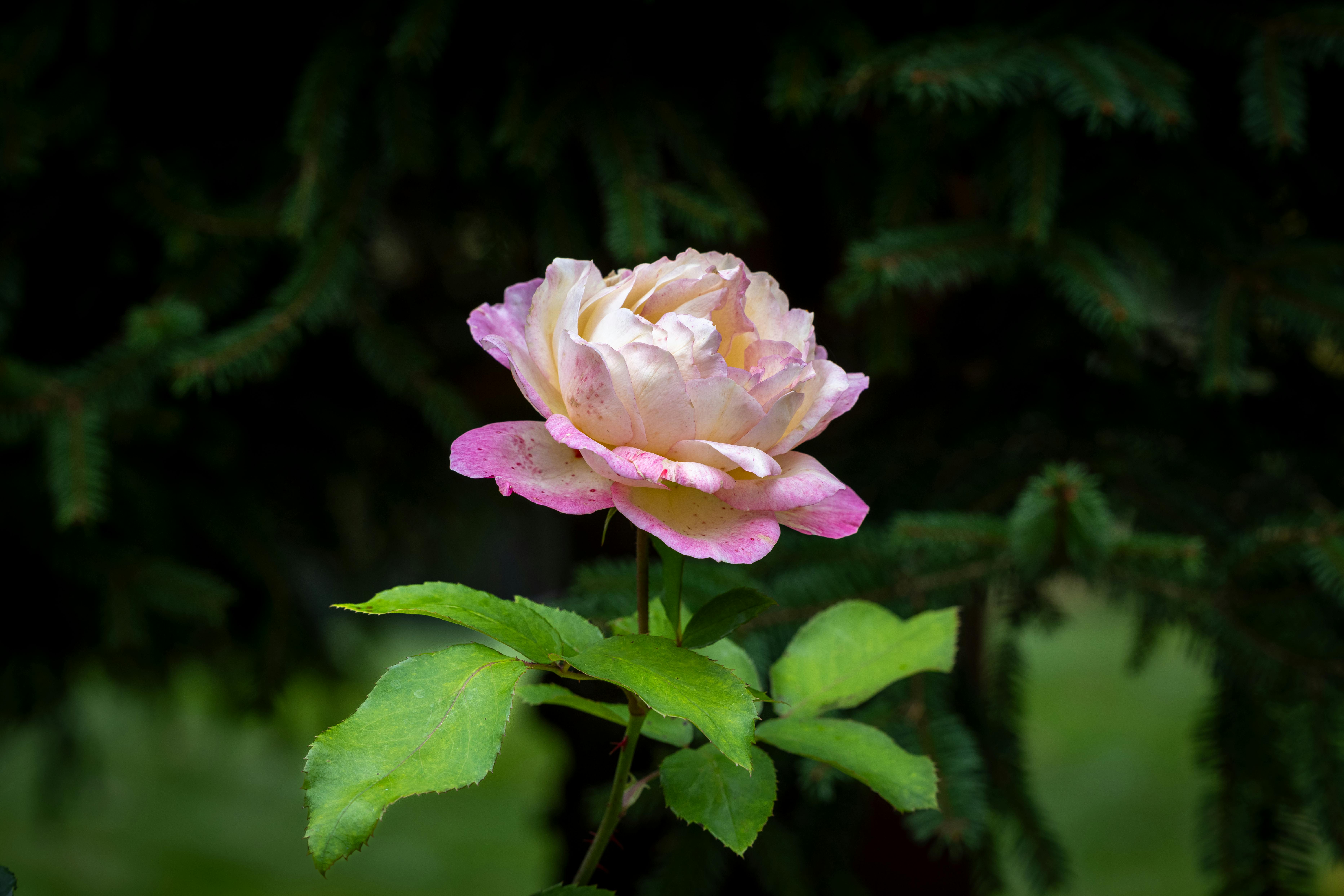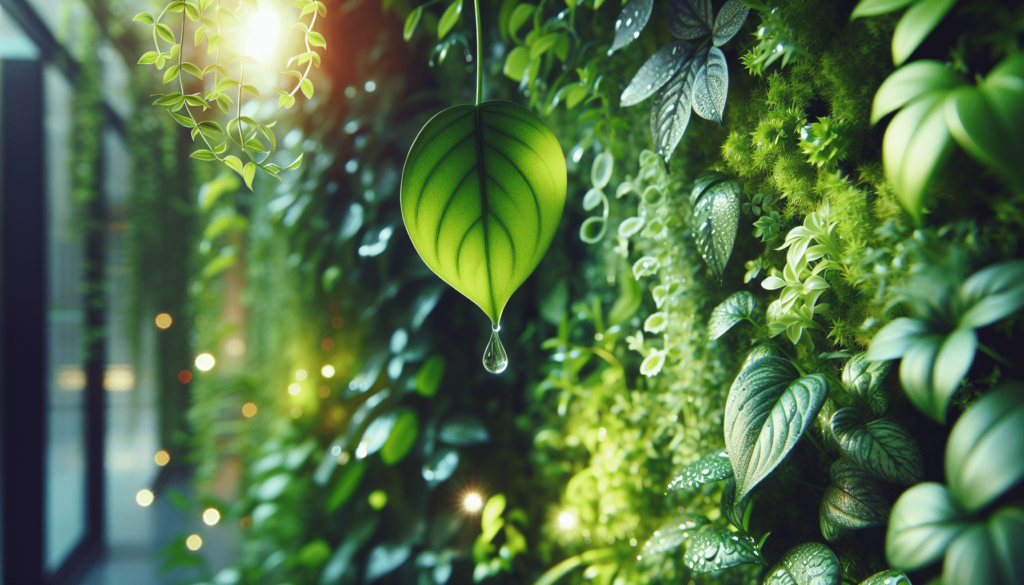Disclosure: As participants in the Amazon Associates Program, we earn from qualifying purchases. This means when you click on an Amazon link on this page and make a purchase, we receive a commission. This doesn’t affect the price you pay but it does help us to keep producing the content you love to see. We always aim for honesty and transparency in everything we do, and your support means the world to us. Thank you for helping us grow and for being part of our community.
Are you a budding vertical gardener wondering about the ins and outs of watering your lush green oasis? Look no further! Our comprehensive FAQ section is here to provide you with all the guidance you need. From choosing the right vertical garden kit to tackling more advanced issues, our platform is designed to demystify the vertical gardening process and empower you with the knowledge to thrive. Join our growing community of vertical gardening enthusiasts and let us help you transform your space into a vibrant, green landscape with the magic of vertical garden kits. So, how often should you water your vertical garden? Read on to find out!

This image is property of images.pexels.com.
Factors to Consider
When determining how often to water your vertical garden, there are several important factors to consider. These factors include the type of plants in your garden, the climate of your location, the size of your garden, the type of soil you’re using, and the type of vertical garden system you have implemented.
Type of Plants
Different plants have different water requirements, so it’s essential to consider the types of plants you have in your vertical garden. Some plants may require more frequent watering, while others may be more tolerant of dry conditions. Research the specific watering needs of each plant in your garden to ensure you’re providing them with the right amount of water.
Climate
The climate of your location plays a significant role in determining how often you should water your vertical garden. In hot and dry climates, plants tend to lose water more quickly through evaporation, and therefore, may require more frequent watering. Conversely, in cooler and more humid climates, plants may need less frequent watering. Take into account the average temperature and humidity levels in your area to establish a watering schedule.
Size of Garden
The size of your vertical garden can influence watering frequency. Larger gardens tend to retain more moisture for a longer time, reducing the need for frequent watering. However, smaller gardens may dry out more quickly and require more regular watering. Evaluate the size of your garden and adjust your watering routine accordingly.
Type of Soil
the type of soil you use in your vertical garden can impact its water-holding capacity. Some soils retain moisture better than others, while others may drain quickly. Choose a well-draining soil that retains moisture without becoming soggy. Consider adding organic matter, such as compost, to improve the soil’s water retention capabilities.
Type of Vertical Garden System
The type of vertical garden system you have in place also affects watering frequency. Different systems, such as container gardens, green walls, and Hydroponic systems, have distinct water requirements. Container gardens may dry out more quickly and necessitate more frequent watering, while green walls and hydroponic systems often have built-in irrigation systems that regulate water distribution. Familiarize yourself with the specific water needs of your chosen vertical garden system.
Determining Watering Frequency
To determine how often to water your vertical garden, it’s important to consider a few key factors. By observing your plants, testing soil moisture, considering plant needs, and evaluating environmental conditions, you can establish an appropriate watering routine.
Observation
Regularly observing your plants is an effective way to determine their watering needs. Look for signs of wilting, dry soil, or yellowing leaves, as these can indicate under watering. Conversely, if you notice soggy soil, root rot, or drooping leaves, it may be a sign of overwatering. Paying close attention to your plants’ appearance and behavior can help you adjust your watering frequency accordingly.
Moisture Testing
Testing the moisture level of your soil is another method to determine when to water your vertical garden. Use a soil moisture meter or simply stick your finger into the soil to assess its dampness. If the soil feels dry to the touch, it’s time to water. If it’s still moist, it’s best to hold off on watering.
Plant Needs
Different plants have varying water requirements, so it’s crucial to understand the specific needs of the plants in your vertical garden. Some plants prefer drier conditions, while others thrive in consistently moist soil. Research the watering needs of each plant in your garden and tailor your watering frequency to accommodate their preferences.
Environmental Conditions
Environmental factors such as temperature, humidity, and sunlight exposure can affect how often you should water your vertical garden. Hot and dry conditions may necessitate more frequent watering, while cool and humid conditions may require less. Additionally, plants in direct sunlight may lose water more quickly, so adjust your watering schedule accordingly.

This image is property of images.pexels.com.
Signs of Underwatering
Underwatering can have detrimental effects on your vertical garden, so it’s essential to recognize the signs and take action promptly. Some common signs of underwatering include wilting plants, dry soil, and yellowing leaves.
Wilting
Wilting is a clear indication that your plants are not receiving enough water. When plants don’t receive adequate moisture, they are unable to maintain their turgidity, causing them to droop or wilt. If you notice wilting in your vertical garden, it’s crucial to water your plants immediately to prevent further damage.
Dry Soil
Another sign of underwatering is dry soil. If you notice that the soil in your vertical garden feels dry to the touch, it’s an indication that your plants are not receiving sufficient water. Dry soil can lead to dehydration and stress in plants, hindering their growth and overall health.
Yellowing Leaves
Yellowing leaves can also be a sign of underwatering. When plants lack water, their leaves may turn yellow and eventually brown, indicating stress and potentially irreversible damage. If you notice yellowing leaves in your vertical garden, increase your watering frequency to provide your plants with the hydration they need.
Signs of Overwatering
While it’s essential to avoid underwatering, overwatering can be just as detrimental to the health of your vertical garden. Some common signs of overwatering include soggy soil, root rot, and drooping leaves.
Soggy Soil
One of the most obvious signs of overwatering is soggy soil. Excessive moisture in the soil can lead to poor drainage, depriving the roots of oxygen and causing them to suffocate. If you notice that the soil in your vertical garden is consistently wet and appears saturated, it’s a sign that you may be overwatering your plants.
Root Rot
Overwatering can create an environment conducive to root rot, a condition where the roots of plants become damaged and decay due to excessive moisture. If your plants exhibit stunted growth, have discolored or mushy roots, or emit a foul odor, it’s likely that root rot has occurred. To prevent further damage, reduce watering frequency and adjust drainage in your vertical garden.
Drooping Leaves
Drooping leaves can also be a sign of overwatering. When plants receive too much water, their leaves may become soft, wilted, or droopy. Overwatering can hinder the uptake of oxygen and nutrients, leading to weakened and unhealthy plants. If you notice drooping leaves in your vertical garden, evaluate your watering practices and make necessary adjustments.

This image is property of images.pexels.com.
General Guidelines for Watering
To maintain a healthy and thriving vertical garden, there are several general guidelines to follow when it comes to watering. These guidelines include consistency, establishing a watering schedule, using appropriate watering methods, and providing the right amount of water.
Consistency
Consistency is key when it comes to watering your vertical garden. Try to establish a regular watering routine and stick to it as much as possible. Plants generally prefer consistent moisture levels rather than periods of drought followed by excessive watering. Consistency in watering helps promote healthy root growth and overall plant development.
Watering Schedule
Establishing a watering schedule can ensure that your vertical garden receives the appropriate amount of water at regular intervals. Consider factors such as the type of plants, climate, and soil moisture when determining your watering schedule. It may be necessary to adjust the frequency of watering based on environmental conditions and the specific needs of your plants.
Watering Methods
Using appropriate watering methods is crucial for effectively watering your vertical garden. Avoid excessively wetting the foliage, as this can lead to disease and fungal growth. Instead, focus on watering the soil directly at the base of the plants. This allows the roots to absorb the water more efficiently and helps prevent the development of common plant issues.
Amount of Water
Providing the right amount of water is essential for maintaining a healthy vertical garden. Too little water can result in dehydration and stress, while too much water can lead to root rot and other water-related issues. Research the specific water requirements of the plants in your garden and adjust the amount of water accordingly.
Watering Techniques for Different Vertical Garden Systems
Different vertical garden systems may require specific watering techniques to ensure optimal plant growth and health. Here are some watering techniques to consider for various types of vertical gardens:
Container Gardens
For container gardens, it’s essential to pay attention to the moisture level of the soil. Container plants typically dry out more quickly than plants in the ground, so they may require more frequent watering. Regularly check the soil moisture and water as needed, ensuring that the water reaches the roots of the plants.
Green Walls
Green walls often have built-in irrigation systems that distribute water evenly throughout the vertical garden. These systems can be programmed to provide the appropriate amount of water at regular intervals. Familiarize yourself with the specific irrigation system in your green wall and adjust the settings accordingly to ensure optimal watering.
Hydroponic Systems
Hydroponic systems utilize a nutrient-rich water solution to provide plants with the necessary moisture and nutrients. These systems typically use a recirculating system that continuously provides water to the plants. Monitor the nutrient levels and adjust the water supply as needed to maintain the ideal growing conditions for your hydroponic vertical garden.

Considerations for Outdoor Vertical Gardens
Outdoor vertical gardens have unique considerations when it comes to watering. Factors such as rainfall, evaporation, and wind play a significant role in determining the watering frequency.
Rainfall
In regions with regular rainfall, the need for supplemental watering may be reduced. Monitor the amount of rain your vertical garden receives and adjust your watering schedule accordingly. During rainy periods, you may need to decrease the frequency and duration of watering to avoid overwatering.
Evaporation
Hot and dry climates can result in increased evaporation from the soil, requiring more frequent watering. Keep an eye on the weather conditions and adjust your watering schedule to account for increased evaporation rates. Consider providing shade or using mulch to help reduce evaporation and retain moisture in the soil.
Wind
Wind can also affect how quickly the soil in your vertical garden dries out. Strong winds can accelerate moisture loss, leading to increased watering needs. Consider placing windbreaks or protective barriers around your garden to minimize the drying effects of wind and conserve moisture.
Considerations for Indoor Vertical Gardens
Indoor vertical gardens require specific considerations when it comes to watering. Factors such as humidity, temperature, and air circulation can influence watering frequency.
Humidity
Indoor environments often have lower humidity levels compared to outdoor settings. Dry air can cause plants to lose moisture more quickly, necessitating more frequent watering. Consider placing a humidifier near your indoor vertical garden to increase humidity levels and help retain moisture in the soil.
Temperature
Temperature fluctuations in indoor spaces can affect how often you should water your vertical garden. Warmer temperatures can increase water evaporation, requiring more frequent watering. Monitor the temperature in your indoor space and adjust your watering schedule accordingly to prevent under or overwatering.
Air Circulation
Indoor spaces with poor air circulation can result in stagnant air around your vertical garden. Stagnant air can hinder evaporation and increase the risk of fungal diseases. Ensure that there is adequate air circulation around your vertical garden by using fans or opening windows. This promotes healthy plant growth and prevents water-related issues.

Tips for Efficient Watering
To maximize the efficiency of watering your vertical garden, consider implementing these tips and techniques:
Mulching
Mulching the soil surface helps retain moisture and regulate soil temperature. Apply a layer of organic mulch, such as wood chips or straw, around the base of your plants. Mulch acts as a barrier, preventing excessive evaporation and reducing the need for frequent watering.
Drip Irrigation
Drip irrigation is an efficient way to deliver water directly to the root zone of your plants. This method minimizes water waste by delivering water slowly and precisely to where it’s needed most. Consider installing a drip irrigation system in your vertical garden to ensure consistent and efficient watering.
Watering at the Right Time
Watering your vertical garden at the right time of day can make a significant difference in water absorption and plant health. Watering in the early morning or late afternoon allows the plants to absorb the water before it evaporates in the heat of the day. Avoid watering during the hottest part of the day to prevent water loss and stress on the plants.
Monitoring and Adjusting Watering Frequency
Establishing a watering routine is essential, but it’s equally important to regularly monitor and adjust your watering frequency based on your plants’ needs and environmental changes.
Regular Check-ups
Schedule regular check-ups of your vertical garden to assess plant health and soil moisture levels. Inspect your plants for signs of over or underwatering, and feel the soil to determine its dampness. Use this information to make informed decisions about adjusting your watering frequency.
Plant Response
Pay close attention to how your plants respond to your watering practices. If you notice signs of stress, such as wilting or yellowing leaves, it may be a sign that you’re not providing enough water. Conversely, if you observe signs of overwatering, such as drooping leaves or root rot, it may be necessary to decrease your watering frequency.
Weather Changes
Weather changes, such as fluctuations in temperature or humidity, can impact how often you should water your vertical garden. During hot and dry periods, you may need to increase your watering frequency, while cooler and more humid conditions may require less watering. Stay informed about weather forecasts and adjust your watering routine accordingly.
By considering the factors that influence watering frequency, recognizing the signs of under and overwatering, following general guidelines for watering, implementing techniques specific to your vertical garden system, and monitoring and adjusting as needed, you can ensure optimal hydration for your vertical garden and promote healthy plant growth. Remember, each garden is unique, so it’s important to tailor your watering routine to meet the specific needs of your plants and environmental conditions. With these tips and knowledge, you’ll be on your way to creating a thriving and vibrant vertical oasis.







